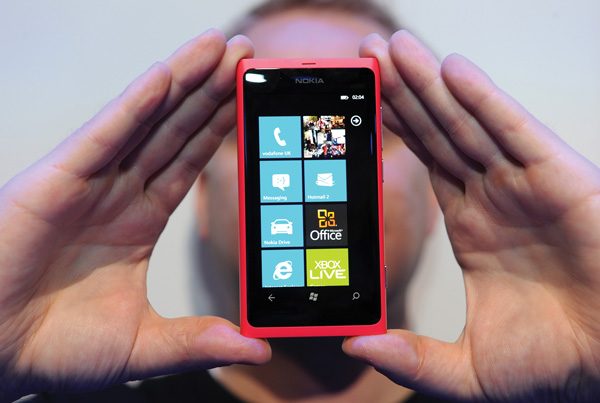
A new report has revealed that the rate at which smartphones are being adopted in sub-Sahara Africa is only 15 per cent, which is the lowest worldwide. The report found that smartphones account for one in three mobile connections today, representing more than 2 billion mobile connections.
The African market presents itself as one of the most lucrative markets for smartphones, poised for unprecedented growth.
The number of smartphone connections is expected to grow three-fold over the next six years to reach 6 billion by 2020, and that would be driven largely by a boost in smartphone connections in the developing world and expansion of mobile broadband access. Out of the 100 million or so mobile phones sold in Africa this year, 20 million are smartphones.
Despite the projected growth of the global smartphone market, sub-Saharan Africa still lags behind when it comes to smartphone connections.
Sub-Saharan Africa is expected to be the fastest-growing smartphone region over the next six years as affordable devices become more widely available and mobile broadband networks are deployed across Africa. By 2020, four out of every five-smartphone connection worldwide would come from the developing markets in Africa.
The main factors driving smartphone adoption in the African world are affordability, subsidies by telecoms operators and data packages that telecom operators offer. These factors and others would be the main drivers of increased smartphone adoption in the African markets, and eventually place Africa way ahead of the developed world in terms of smartphone adoption.
 In Ghana, for instance, some telecom operators have reported increased data consumption and revenues on their respective networks on the back of affordable smartphones. MTN Ghana has revealed that data consumption increased on its network after it introduced a number of affordable smartphones like Huawei Ascend Y210, Ascend Y220 and one of Tecno’s Phantom series among others.
In Ghana, for instance, some telecom operators have reported increased data consumption and revenues on their respective networks on the back of affordable smartphones. MTN Ghana has revealed that data consumption increased on its network after it introduced a number of affordable smartphones like Huawei Ascend Y210, Ascend Y220 and one of Tecno’s Phantom series among others.
Meanwhile, affordable smartphone dealer, Tecno Ghana is also introducing yet another affordable smartphone, Tecno Phantom Z unto the market, and promises data packages across networks in Ghana. Industry watchers believe that would shore up smartphone connection in Ghana and also drive internet penetration.
Africa is predominantly a prepaid environment, where most consumers opt for low-priced feature phones. African operators rarely offer handset subsidies, only doing so in the comparatively mature markets of Morocco and South Africa, where there are higher proportions of postpaid users.
The study shows that smartphones will be the driving force of mobile industry growth over the next six years, with one billion new smartphone connections expected over the next 18 months alone.
Samsung Electronics is preparing to beat its $10bn target for revenue from Africa in 2015.
“I would say that the South African market is probably on par with the Nigerian market, although I foresee that the Nigerian market should probably overtake the South African market in terms of smartphones,” says George Ferreira – Vice-president and chief operating officer of Samsung Africa. “The premium smartphone is really an aspirational product for everybody. The demand that we’ve seen from the distributors, from the consumers, from the partners, from the telecos across Africa has really been phenomenal. The most affordable is our entry-level Galaxy Pocket. In South Africa, it retails for $100. Elsewhere in Africa, it’s probably around the $110-$120 mark. The successors of the Galaxy Pocket are the Galaxy Neo and Galaxy Star. We will see them being positioned more aggressively in the market, at around the $100 price point,” he says.
 Industry experts believe that smartphone prices will soon fall to around $60. For customers in Africa, price is a very important element—so over the next three or four years when the prices gets cheaper to $50 to $60 for an entry level smartphone, an uptake in smartphone usage is inevitable.
Industry experts believe that smartphone prices will soon fall to around $60. For customers in Africa, price is a very important element—so over the next three or four years when the prices gets cheaper to $50 to $60 for an entry level smartphone, an uptake in smartphone usage is inevitable.
Africa has a growing young population that is increasingly tech savvy and urbanized. This is attracting foreign sellers of consumer products like smartphones, especially as markets stagnate or shrink in more developed nations.
Smartphones will constitute 20 per cent of the Africa market by 2017 as devices priced at below $50 become a reality. Smartphone use in South Africa is already slightly above the global average.
Other phone makers that are targeting Africa’s smartphone market include Huawei Technologies Co., China’s largest networking-equipment manufacturer, which aims to become one of the top three smartphone vendors globally by 2018.
There are few known smartphone assembly firms in Africa. Some two South African companies, Seemahale Telecoms and CZ Electronics, partnered earlier this year to design, develop and manufacture the first smartphones in Africa.
Smartphone usage in sub-Saharan Africa is expected to surge by 40% each year until 2017. Data demand in the region is also expected to reach an average 0.45GB per month per user by 2016. In fact, Africa is one of the few regions in the world where growth in both mobile connections and service revenue is expected over the next five years.
Another opportunity for handset makers in Africa, perhaps more than anywhere else in the world, is the 50-plus age demographic, or “silver surfers”. This demographic has not had exposure to technology through the rise of PC penetration and, as a result, there is demand for handsets designed specifically for the older population.
However, feature phones are still expected to dominate in Africa for the foreseeable future, and as Microsoft’s Fuchs says:”The ten per cent is important, but more important is the 90 per cent.”















